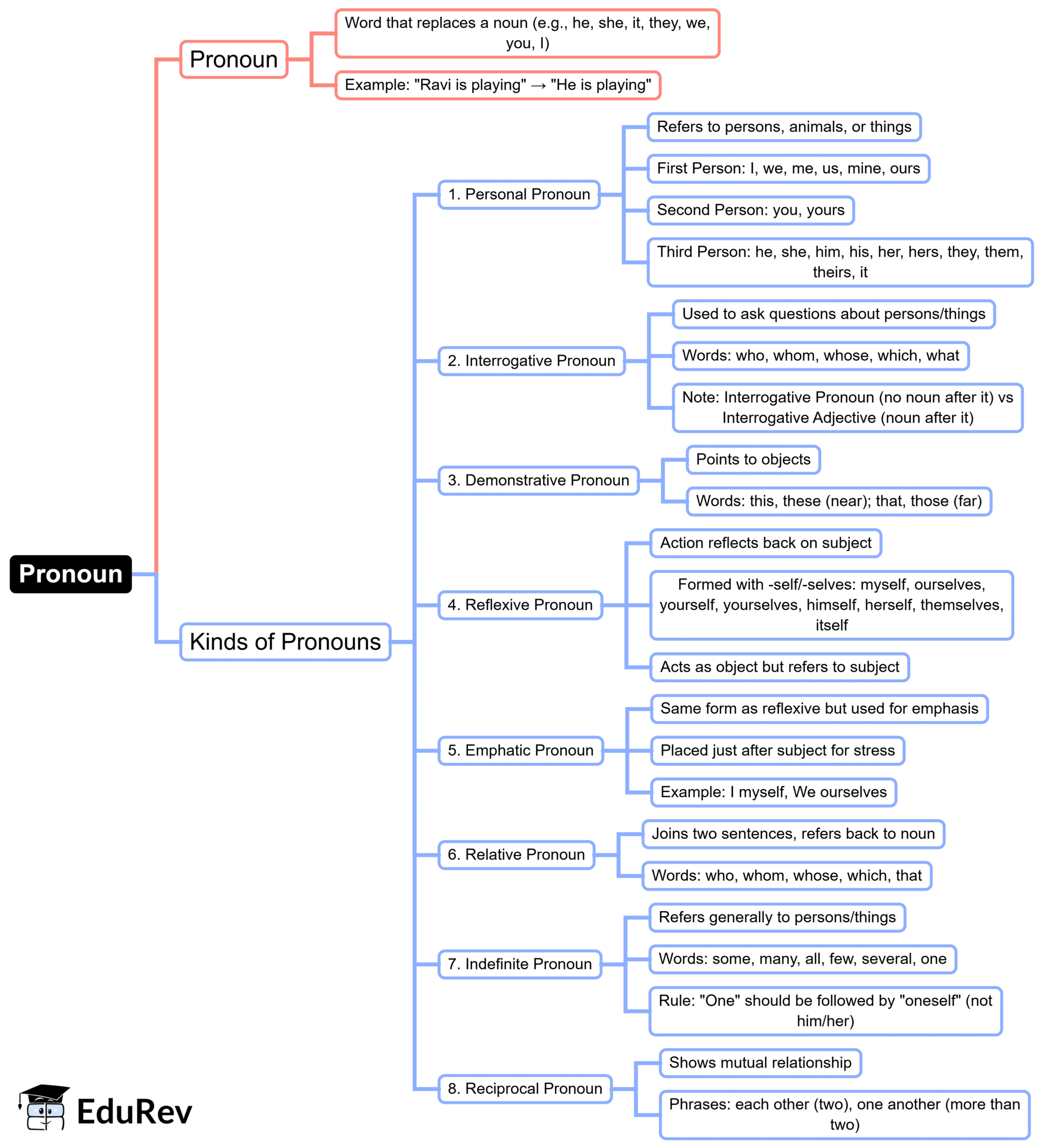Class 4 Exam > Class 4 Notes > English for Class 4 (Santoor: New NCERT) > Mind Map: Pronoun And Its Kinds
Mind Map: Pronoun And Its Kinds | English for Class 4 (Santoor: New NCERT) PDF Download

The document Mind Map: Pronoun And Its Kinds | English for Class 4 (Santoor: New NCERT) is a part of the Class 4 Course English for Class 4 (Santoor: New NCERT).
All you need of Class 4 at this link: Class 4
|
41 videos|476 docs|39 tests
|
FAQs on Mind Map: Pronoun And Its Kinds - English for Class 4 (Santoor: New NCERT)
| 1. What is a pronoun and why is it important in English grammar? |  |
Ans. A pronoun is a word that replaces a noun in a sentence. It is important in English grammar because it helps avoid repetition and makes sentences clearer. For example, instead of saying "Maria likes Maria's book," we can say "Maria likes her book," where "her" is the pronoun replacing "Maria."
| 2. What are the different kinds of pronouns? |  |
Ans. There are several kinds of pronouns, including personal pronouns (I, you, he, she, it, we, they), possessive pronouns (mine, yours, his, hers, ours, theirs), reflexive pronouns (myself, yourself, himself, herself, itself, ourselves, yourselves, themselves), demonstrative pronouns (this, that, these, those), and interrogative pronouns (who, whom, whose, which, what). Each type serves a specific purpose in a sentence.
| 3. How do personal pronouns differ from possessive pronouns? |  |
Ans. Personal pronouns refer to specific people or things and can act as the subject or object in a sentence, such as "I" or "them." Possessive pronouns, on the other hand, indicate ownership and describe to whom something belongs, such as "mine" or "theirs." For example, in the sentences "She has a dog" (personal pronoun) and "The dog is hers" (possessive pronoun), the roles of the pronouns are different.
| 4. Can you give examples of reflexive pronouns and when to use them? |  |
Ans. Reflexive pronouns are used when the subject and the object of a sentence are the same person or thing. Examples include "myself," "yourself," "himself," "herself," "itself," "ourselves," "yourselves," and "themselves." For instance, in the sentence "He taught himself to play the guitar," "himself" shows that the subject "he" is also the one receiving the action.
| 5. What are demonstrative pronouns and how are they used in sentences? |  |
Ans. Demonstrative pronouns are used to point to specific things or people. The main demonstrative pronouns are "this," "that," "these," and "those." They help indicate proximity; for example, "this" and "these" refer to things that are close, while "that" and "those" refer to things that are farther away. For example, in the sentence "This is my book," "this" points to a book that is nearby.
Related Searches
















